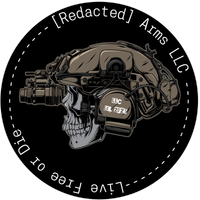Common Issues
Our Super Safetys are designed to fit most AR platforms with minimal custom fitting. However, due to slight variations among manufacturers of receivers, bolt carriers, and other fire control group components, minor fitting of the lever may be necessary if the bolt binds while manually cycling the action.
Certain combinations of parts and receivers may also result in a heavier trigger pull in Super Safe mode, or in some cases, may prevent the trigger from being pulled in this mode altogether.
Bolt bounce in Super Safe mode is another common issue and is often mistaken for light primer strikes or the belief that the trigger or hammer failed to reset—when, in reality, the hammer simply followed the bolt into battery.
General Tips for Optimal Performance:
Always use the included stainless detent — install it with the domed side facing upward toward the Push Button Safety. Do not modify the detent. Do not use an unmodified, cone-shaped OEM detent. Do not cut or shorten the safety selector spring.
The Push Button Safety should require firm, deliberate pressure to switch between Fire, Super Safe, and Safe modes. It should never feel loose or be able to change positions unintentionally during use.
Heavy trigger pull or no trigger movement in Super Safe mode
1. Initial Trigger Inspection:
When inspecting the trigger, focus on the rear trigger cuts — the edges should be slightly rounded with no excess metal shavings or sharp burrs. If you receive a trigger from us that hasn’t been properly deburred, please reach out for an exchange or refund.
If minor burrs or leftover shavings are present, you can lightly file, sand, or grind the edges to clean them up. These metal remnants can interfere with the cam, causing the trigger to bind and preventing smooth operation.
2. Reducing Excessive Trigger Pull Weight:
If your trigger is properly deburred but still has a heavy pull weight, follow these steps to fine-tune it: Remove the trigger from the lower receiver. Detach the disconnector spring from the trigger. Place a sheet of 80-120 grit sandpaper along the edge of a hard, flat surface. Hold the trigger upside down and flat against the sandpaper. Using even pressure, slide the trigger back and forth several inches for 5-10 passes. Reassemble the trigger and test the pull weight. Depending on the pressure used and grit of the sandpaper, you may need to repeat the process for further adjustment.
⚠️ Important:
Do NOT sand past the point where the radius cut blends into the top of the trigger. This radius is crucial for the reset function. If your trigger resets properly, leave the radius cut untouched.
“Light primer strikes” ,”dead trigger over live round”, ”trigger -hammer didn’t reset after it fired”
-Understanding & Fixing Bolt Bounce-
What is Bolt Bounce?
Bolt bounce occurs when the bolt carrier recoils slightly upon closing, preventing the bolt from fully locking into the barrel extension on the first attempt—similar to a door bouncing open instead of latching shut.
When this happens, the hammer is released before the bolt is fully in battery, striking the bolt carrier instead of the firing pin. The free-floating firing pin then moves forward due to inertia, dimpling the primer as the bolt locks into place.
Solutions for Bolt Bounce:
Increase Buffer Weight
– Most users can resolve bolt bounce by upgrading to an H3 buffer or an A2 rifle buffer (both approx. 5.3oz). Heavier Buffers for Persistent Issues – If you're already using an H3 buffer but still experiencing bolt bounce or a dead trigger over a live round, consider switching to a heavier buffer: Use an A5 buffer system (various options available starting around $38). Try 4” A5 or PCC buffers for additional weight. The Odin Works 9mm adjustable buffer (5.4oz-7.4oz) is 3.25” in length and works with a standard M4 buffer tube. Heavybuffers.com offers purpose-built carbine-length buffers in heavier weights.
Adjustable Gas System
– While an adjustable gas system may help, we have not tested this as a standalone solution. Upgrading to the right buffer weight should significantly reduce or eliminate bolt bounce, ensuring smooth cycling and reliable function. Use an Adjustable Gas System to tune your firearm after installing a heavier buffer weight.
Bolt Binding
-Adjusting for Proper Lever and BCG Fit-
The lever must fit between the ramped portion of the BCG and the inside of the upper receiver when the bolt reaches the end of its rearward cycle. If your BCG is binding at this point, the lever is either too thick or needs to move further back, preventing the BCG from getting wedged during cycling.
To fix this, we generally recommend cutting the upper receiver to allow more room for the lever’s rearward movement. The area to modify is non-structural and is typically cut halfway through the receiver’s thickness at the factory.
If your BCG still binds after the cut, you may need to lightly sand, grind, or file the top of the lever. Only a small amount—around the thickness of one or two human hairs—should be removed from the top of the lever to allow proper movement.
To do this:
Use 80-120 grit sandpaper.
Hold the lever upside down and rub it back and forth a few times on the sandpaper. Depending on the grit and pressure used, you may need to repeat the process for further adjustment.
If you choose not to cut the upper, you’ll need to remove more material from the lever itself.
For AR9s:
If the internal weight of the BCG protrudes past the lower lip of the carrier, you’ll need to remove and trim the weight to create space for the lever. If the weight extends over the lever, it may cause binding as the bolt closes.
Most AR9 internal weights are held in place with a roll pin. To remove the weight: Use a hammer and punch to knock out the roll pin. Remove the weight and trim it flush to ensure the lever can move freely.
